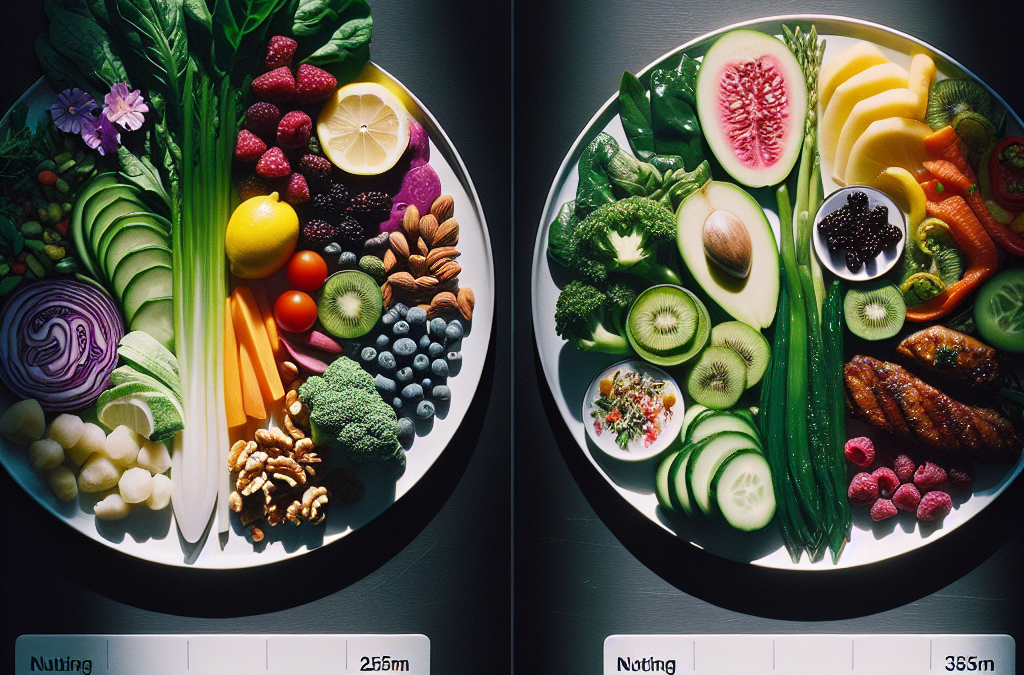Understanding Nutrient Density
What is Nutrient Density?
Nutrient density is a term that refers to the amount of essential nutrients a food contains relative to the number of calories it provides. When I first delved into nutrition, this concept blew my mind! Foods like leafy greens or berries pack a huge punch of vitamins, minerals, and antioxidants without loading up on calories. It’s all about getting the most out of every bite.
So, when we’re talking raw food, which is essentially uncooked and unprocessed, the nutrient density can be a real game changer. Imagine biting into a crisp carrot straight from the garden—or a juicy apple. They’re not just tasty; they’re little powerhouses of nutrients!
But how do we measure this nutritional richness, you might ask? It comes down to looking at the vitamin and mineral content compared to calorie content. Essentially, the higher the nutrient density, the better the food is for our bodies.
Cooking vs. Raw
The Cooking Process
Cooking has been a staple in human diets for ages. It makes food easier to digest and often safer to eat by killing off harmful bacteria. However, some cooking methods can strip away vital nutrients. For instance, boiling vegetables can leach out water-soluble vitamins like Vitamin C and B vitamins. I’ve even noticed that overcooked broccoli loses its vibrant green color and crunchy texture!
Heated food can change not only the nutrient profile but also the taste and texture, creating a whole new experience. Roasting or grilling can enhance flavors, which is why so many people love those flavors. But at what cost? It’s a balancing act when deciding how best to prepare our foods.
That said, some nutrients actually become more bioavailable through cooking. For example, lycopene in tomatoes is better absorbed when cooked. So while raw foods are nutrient-dense, cooking can also have its perks!
Benefits of Raw Foods
The Magic of Enzymes
One of the key arguments for raw food is the preservation of enzymes. Enzymes are crucial for digestion and metabolism. When foods are heated above certain temperatures (generally around 118°F or 48°C), these enzymes start to break down. Imagine if your favorite meal could help you digest tomorrow’s meals—how cool is that?
For someone like me who’s dipped their toes into raw food diets, the sensation of eating fresh fruits and veggies uncooked can feel energizing. It’s like you’re fueling your body with pure vitality! The enzymes help promote digestion, allowing my body to break down food more efficiently.
While incorporating raw foods into my diet, I’ve also noticed my energy levels tend to rise. Although it’s not just about feeling good; I’m also thinking of long-term benefits like improved skin health and digestion. Raw foods can be a real game-changer for many.
Choosing the Right Raw Foods
Fruits and Vegetables
When diving into the world of raw food, the first thing I discovered is that not all fruits and veggies are created equal. Some are nutrient powerhouses while others, well, not so much. Leafy greens like kale and spinach, for example, are excellent choices packed with vitamins A, C, and K. Berries are another great option, loaded with antioxidants.
Get Certified Organic Whole Food Nutrition – Nutrient Dense Supplement
But let’s not forget about variety! Eating a rainbow of colors not only makes meals more appealing but also ensures a broader spectrum of nutrients. I love tossing a colorful salad together—it’s like painting with food! Each color often signifies different nutrients that our bodies need.
Additionally, seasonal raw foods often taste better and tend to be more nutrient-dense. Hitting up the farmer’s market and chatting with local growers has turned grocery shopping into an adventure for me. Plus, you can usually snag some tips on how to best prepare your treasures!
Potential Downsides and Considerations
Digestive Issues
While many people rave about the benefits of a raw food diet, it’s common for some to experience digestive discomfort. For instance, some raw veggies, like cruciferous types (think cauliflower or cabbage), can be hard on the tummy when eaten raw, especially for those who aren’t used to them.
It’s crucial to transition gradually. I learned the hard way that diving straight into a raw food diet can leave your digestive system doing backflips! Starting slow by introducing more raw produce day by day has made all the difference for me.
Listening to your body is key: if certain raw foods don’t sit well, it’s perfectly okay to cook them lightly instead. After all, everyone’s body reacts differently, and what works for me might not work for you. Always remember to experiment and find your perfect balance.
FAQ
1. Is raw food always better than cooked food?
Not necessarily. While raw foods retain more nutrients that can be lost during cooking, some foods offer enhanced nutrient absorption when cooked, like tomatoes or carrots.
2. Can I eat all fruits and vegetables raw?
Most fruits and vegetables can be eaten raw, but some, like potatoes or beans, should be cooked to eliminate toxins and make them safe to eat.
3. Do I need to completely switch to raw food for it to be beneficial?
No way! Incorporating more raw foods into your diet while still enjoying cooked meals can provide a balance of nutrients and flavors.
4. Will a raw food diet help with weight loss?
While a raw food diet can lead to weight loss for some due to lower calorie intake, it’s essential to ensure you’re still getting a balanced diet and the necessary nutrients.
5. How can I make raw vegetables more enjoyable to eat?
Try experimenting with dips, marinades, or different preparations, like spiralizing zucchini or making raw salads with nuts and seeds to add texture and flavor!
Get Certified Organic Whole Food Nutrition – Nutrient Dense Supplement
Related Content
- Best Organic Superfood Supplements Local in Medora, Indiana 47260
- Best Local Organic Soup Kitchens in Florence, Minnesota 56170
- 10 Effective organic protein powder strategies for 2025: Boost Your Results
- The Ultimate Guide to 10 Effective Organic Foods That Heal in 2025
- The Ultimate 2025 Certified Organic Nutrition Guide: Top Tips & Strategies




